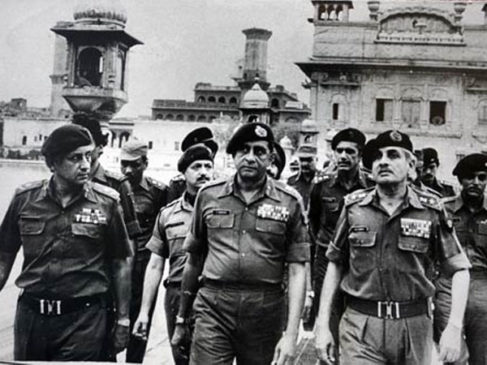Indian Armed forces having great saga of valor and sacrifices in world or with in India itself. The Indian Armed forces always done their job par excellence nothing is matched against their sacrifices. Here are the popular military operations done by Indian Armed forces in the world and within India to safeguard their country people, democracy and their friends.

Operation Polo
Operation Name : Operation Polo
Year : 1948
Location : Hyderabad
Action of Operation : Indian annexation of Hyderabad
Objective of the Operation:
Operation Polo is the code name of the Hyderabad “police action” in September 1948, by the newly independent India against the Hyderabad State. It was a military operation in which the Indian Armed Forces invaded the Nizam-ruled princely state, annexing it into the Indian Union.
Commencement of hostilities in Operation Polo
Started from date 13 September to 17 September 1948
Operation Vijay
Operation Name : Operation Vijay
Year : 1961
Location : Goa, Daman and Diu
Action of Operation : Annexation of Goa
Objective of the Operation
The “armed action” was code named Operation Vijay (meaning “Victory”) by the Indian Armed Forces The Annexation of Goa was the process in which the Republic of India annexed the former Portuguese Indian territories of Goa, Daman and Diu, starting with the “armed action” carried out by the Indian Armed Forces in December 1961. Depending on the view, this action is referred as the “Liberation of Goa” or the “Invasion of Goa“.
Following the end of Portuguese rule in 1961, Goa was placed under military administration headed by Kunhiraman Palat Candeth as Lieutenant Governor. On 8 June 1962, military rule was replaced by civilian government when the Lieutenant Governor nominated an informal Consultative Council of 29 nominated members to assist him in the administration of the territory.
Commencement of hostilities in Operation Vijay
Started from date 17 December 1961
Operation Steeplechase
Operation Name : Operation Steeplechase
Year : 1971
Location : Combined operation against Naxalites
Action of Operation : Combined operation against Naxalites

Objective of the Operation Steeplechase
In July 1971, Indira Gandhi took advantage of President’s rule to mobilize the Indian Army against the Naxalites and launched a colossal combined army and police
counter-insurgency operation, termed “Operation Steeplechase,” killing hundreds of Naxalites and imprisoning more than 20,000 suspects and cadres, including senior
leaders.[16] The paramilitary forces and a brigade of para commandos also participated in Operation Steeplechase. The operation was choreographed in October 1969, and
Lt. General J.F.R. Jacob was enjoined by Govind Narain, the Home Secretary of India, that “there should be no publicity and no records” and Jacob’s request to receive the orders in writing was also denied by Sam Manekshaw.
Operation Blue Star
Operation Name: Operation Blue Star
Year: 1984
Location: Amritsar, Punjab
The action of Operation: remove militant religious leader Jarnail Singh Bhindranwale and his followers from the buildings of the Harmandir Sahib (Golden Temple).

Objective of the Operation Blue Star
Operation Blue Star was the code name of an Indian military action carried out between 1 and 8 June 1984 to remove militant religious leader Jarnail Singh Bhindranwale and his followers from the buildings of the Harmandir Sahib (Golden Temple) complex in Amritsar, Punjab. The decision to launch the attack rested with Prime Minister.
Indira Gandhi In July 1982, Harchand Singh Longowal, the President of the Sikh political party Akali Dal, had invited Bhindranwale to take up residence in the Golden Temple Complex to evade arrest Bhindranwale later made the sacred temple complex an armoury and headquarters. In the violent events leading up to Operation Blue.
Star since the inception of Akali Dharm Yudh Morcha, the militants had killed 165 Hindus and Nirankaris, and 39 Sikhs opposed to Bhindranwale. The total number of deaths was 410 in violent incidents and riots while 1,180 people were injured.
Commencement of hostilities in Operation Blue Star
Started from 1–8 June 1984
Operation Meghdoot
Operation Name : Operation Meghdoot
Year : 13 April 1984
Location : Siachen Glacier, India
Action of Operation : The Indian military decided to deploy troops from Northern Ladakh region as well as some paramilitary forces to the glacier area.

Objective of the Operation Meghdoot
Operation Meghdoot (lit. “Operation Cloud Messenger” after a famous Sanskrit poem by Kalidasa) was the code-name for the Indian Armed Forces operation to capture the Siachen Glacier in the Kashmir region, precipitating the Siachen Conflict. Launched on 13 April 1984, this military operation was unique as the first assault launched in the world’s highest battlefield. The military action resulted in Indian troops gaining control of the entire Siachen Glacier.
Today, the Indian Army deployment to forward positions along what is known as the Actual Ground Position Line (AGPL) is also sometimes inaccurately referred to as Operation Meghdoot. Up to ten infantry battalions each of the Indian Army and Pakistani Army are actively deployed in altitudes up to 6,400 metres (21,000 ft).
Commencement of hostilities in Operation Meghdoot
Started from 13 April 1984
Operation Rajiv
Operation Name : Operation Rajiv
Year : 23–26 June 1987
Location : Siachen Glacier, India
Action of Operation : India captures Quaid Post / Bana Top
Objective of the Operation
Operation Rajiv was an Indian Army operation to capture the highest peak in the Siachen area in 1987. The Pakistan Army had established a post (called the Quaid Post) on the top of the strategically located peak, threatening the Indian movement in the area. An Indian task force, led by Major Varinder Singh, launched multiple attacks to capture the Post. After three unsuccessful attempts, a team led by Naib Subedar Bana Singh captured the Post.
The peak was renamed Bana Top in honour of Bana Singh, who was awarded India’s highest military award Param Vir Chakra for his courage.
The operation was named after Second Lieutenant Rajiv Pandey, who had been killed during an earlier attempt to capture the peak.
Commencement of hostilities in Operation Rajiv
Started from 23–26 June 1987
Operation Pawan
Operation Name : Operation Pawan
Year : 11–25 October 1987
Location : Jaffna Peninsula, Sri Lanka
Action of Operation : India IPKF victory
Objective of the Operation
Operation Pawan (Oparesan Pavan, lit. “Operation Wind”) was the code name assigned to the operation by the Indian Peace Keeping Force (IPKF) to take control of Jaffna from the Liberation Tigers of Tamil Eelam (LTTE), better known as the Tamil Tigers, in late 1987 to enforce the disarmament of the LTTE as a part of the Indo-Sri Lanka Accord.
In brutal fighting lasting about three weeks, the IPKF took control of the Jaffna Peninsula from the LTTE, something that the Sri Lankan Army had tried but failed to do. Supported by Indian Army tanks, helicopter gunships and heavy artillery, the IPKF routed the LTTE at the cost of 214 soldiers.
Commencement of hostilities in Operation Pawan
Started from 11–25 October 1987


